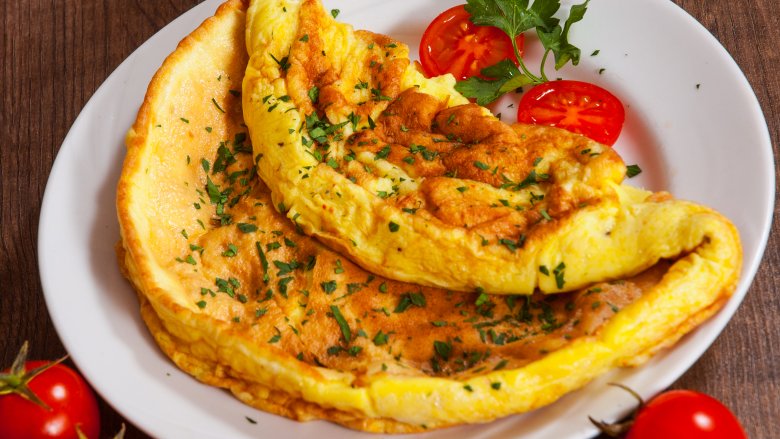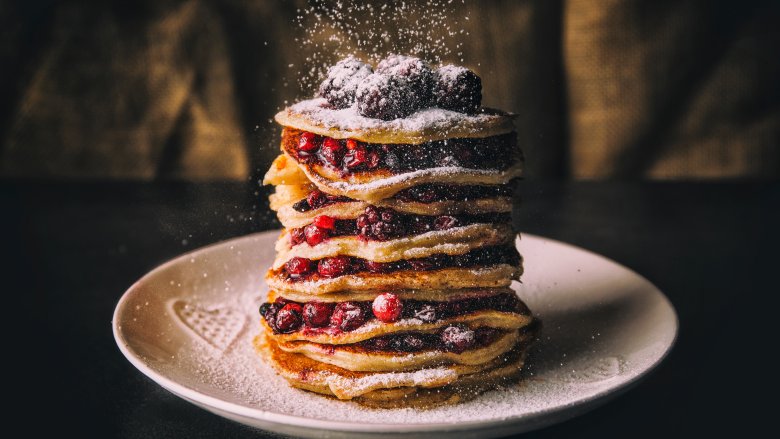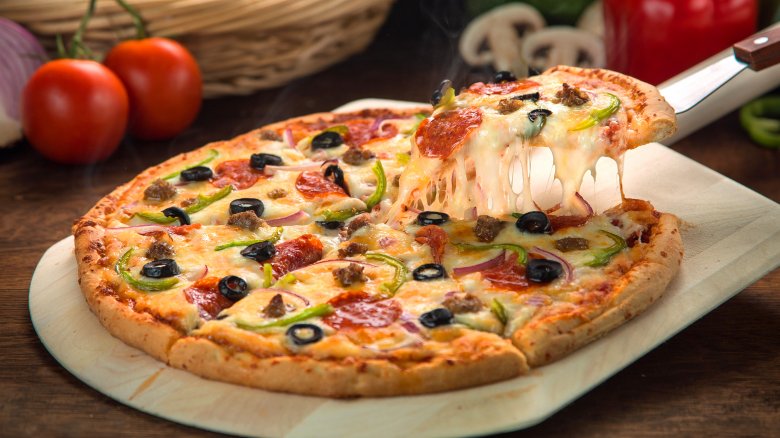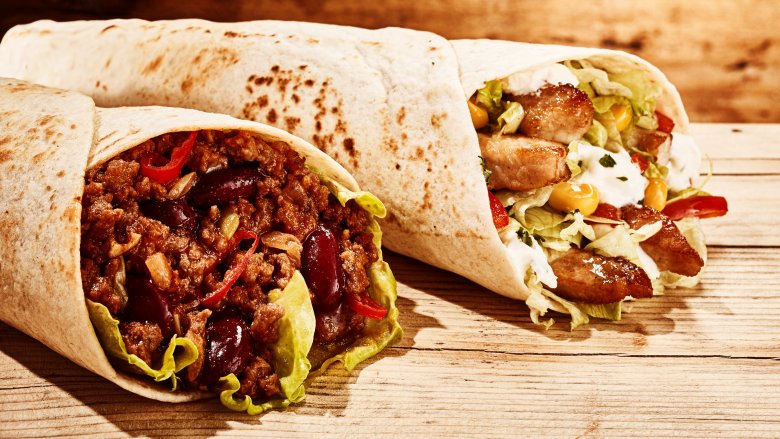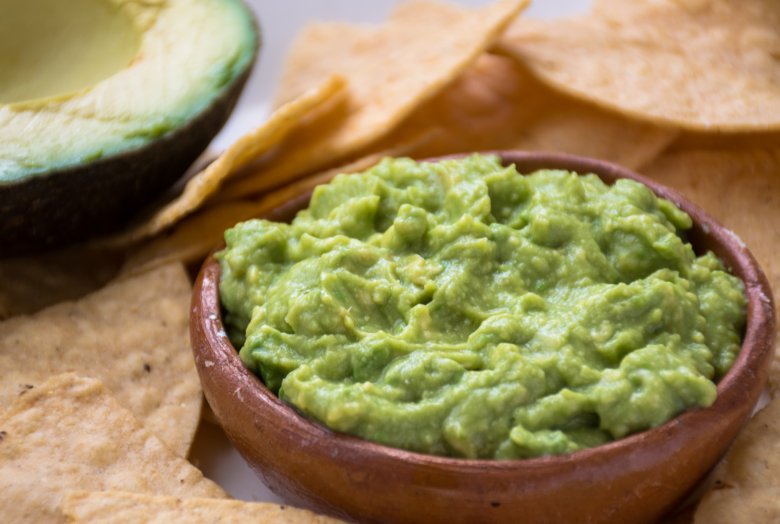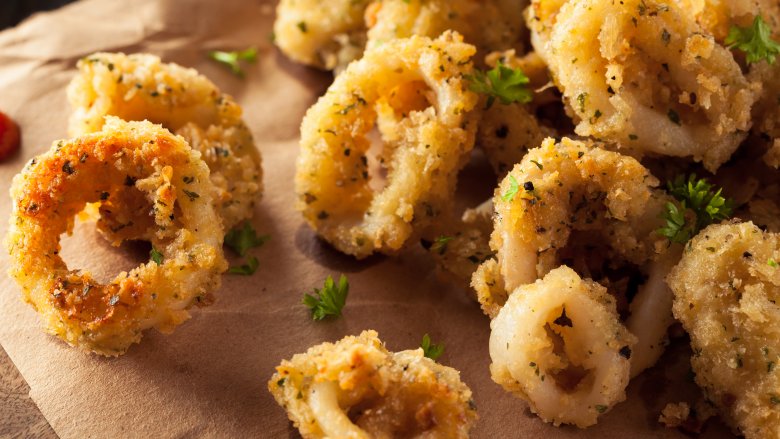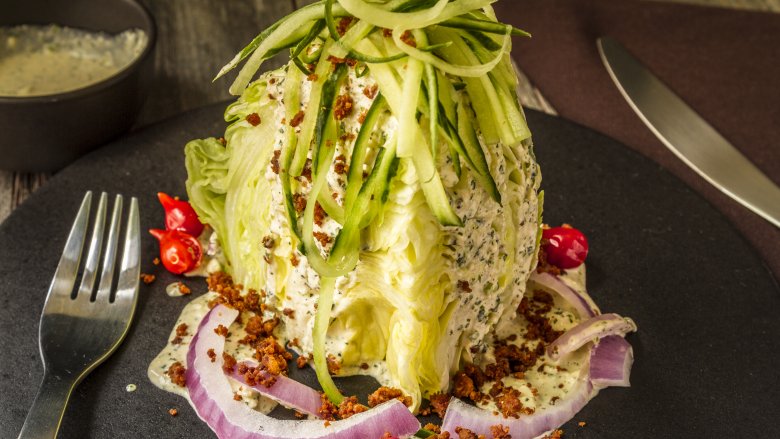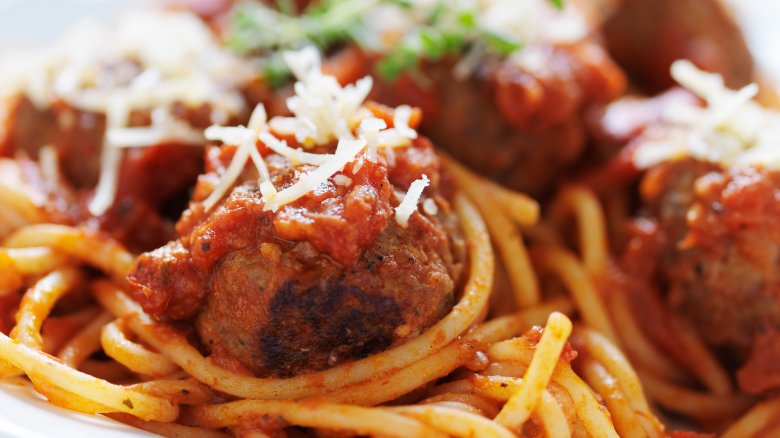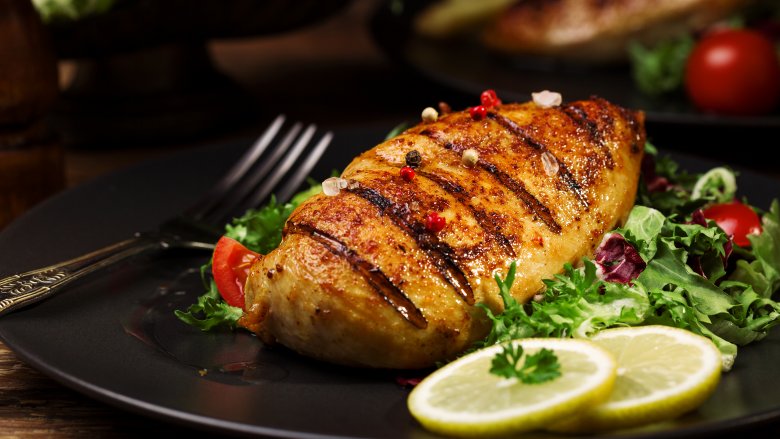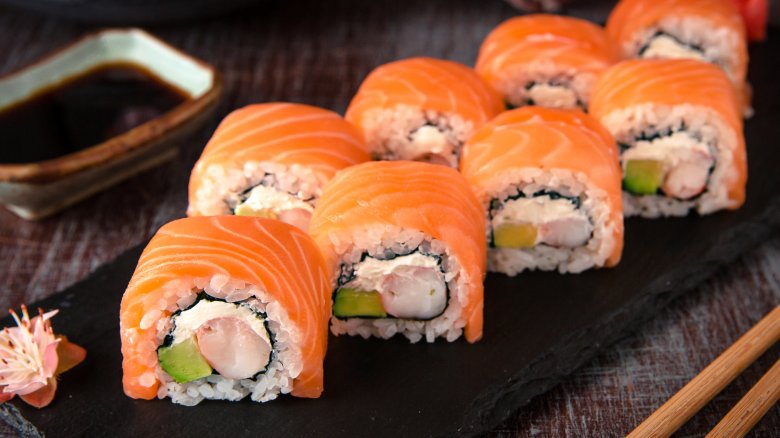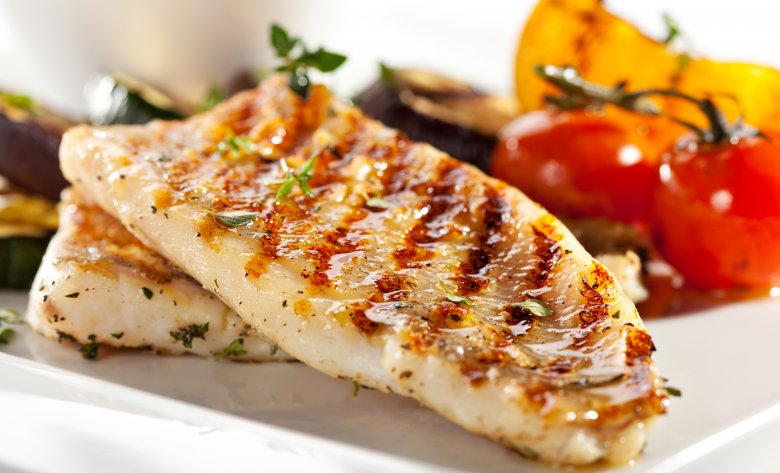Foods You Overpay For At Restaurants
I love going out to eat. Whenever people come to visit me in Miami, I drag them to all my favorite restaurants, my heart fluttering as they tell me how much they love the food. But sometimes, I visit a restaurant, and come home with the distinct feeling that I've just paid far too much for something.
When it comes to eating at restaurants, how do you decide which dishes are worth it and which aren't? Restaurant consultant Clark Wolf told Forbes, "Choose labor-intensive, time-consuming, complex dishes, that call for hard-to-find ingredients. If you can whip it up yourself in 20 minutes with stuff from your kitchen cupboard—do that."
Apart from the time it takes to make a dish, there are certain foods restaurants buy really cheaply and then overcharge for. There are also times when you're not exactly getting what you think you've paid for. Here are some of the most commonly overpriced foods.
Eggs
Think twice before you order an omelet the next time you go out for brunch. Adam Mali, the chef at Nick's Cove, a restaurant on the California coast, told the SFGate that the profit for an egg scramble is 80 percent.
According to the Bureau of Labor Statistics, a dozen eggs costs an average of $1.41. You'll be hard-pressed to find a restaurant that sells eggs for less than $1 a piece, and even at that price, you're paying almost 10 times more for that egg than you would if you made it at home. Plus it takes less than five minutes to fry up an egg on your own — no special skills necessary.
At a more upscale brunch restaurant, you can find yourself paying $15 for a pair of eggs and a piece of toast — talk about a price hike!
If you want to make eggs at home, check out this fried egg tutorial by Incredible Egg. You can cook up eggs that are every bit as delicious as the ones in the restaurant down the street.
Pancakes
While I'm on the subject of breakfast, let's talk about pancakes. Like eggs, they're fairly easy to make and wildly expensive compared to what they cost the restaurant. While it costs the restaurant less than $1 for the ingredients needed to make pancakes — flour, sugar, milk, and butter— you'll find yourself paying around ten times that for a short stack.
Forbes suggested you guzzle down the syrup, as that's likely the most expensive item on your plate.
If you'd rather make pancakes at home, check out this recipe for fluffy pancakes. Their secret to fluffier pancakes? Add vinegar to your milk before mixing it in.
Pizza
My mouth waters at the mere thought of pizza. But this delicious wonder of cheesy goodness is one of the most overpriced items you can buy at a restaurant. Frank Klein, a national restaurant consultant, told SFGate that a large cheese pie that costs $16-$20 likely only costs $2.50 in ingredients.
For pizza toppings, the markup only gets steeper. According to Market Watch, a large pizza with olives, mushrooms, onions, pepper, pepperoni, and Italian sausage only costs a restaurant about $1.90. When you pay $14 on average for that same pizza, you're dealing with a 636 percent markup. A cheese pizza, on the other hand, costs the restaurant $1.77 and customers pay $12 on average. That means a 12 cent added cost for the restaurant costs you at least $2 more.
If you'd rather save your money and make your own pizza, you'll love The Food Network's 50 ideas for easy homemade pizzas. Or just buy a premade crust, slather on some store-bought tomato sauce and a few choice toppings, and enjoy.
Burritos
Burritos also cost you way more than they cost the restaurants, and if you've ever bought a burrito at Chipotle, you know how quickly they're made. Market Watch tallied up the price for a standard burrito, which included carnitas, cheddar cheese, avocado, sour cream, white rice, beans, lime, cilantro, jalepeño, and garlic. Even with all of those ingredients, restaurants pay a mere $2.02 while charging you at least $9 for that same burrito. That results in a 346 percent markup. Ouch. For a deluxe burrito with steak and crema, the price goes up more for them than for you, resulting in a 158 percent markup. So either go for the steak, or go home and make your own burrito.
The next time you get a hankering for a burrito, buy your own ingredients and roll up your own at home. Try this homemade take on Chipotle's carnitas burrito (complete with my favorite corn salsa). Or get grilling and whip up a Chipotle Mexican Steak and Cilantro Lime Rice Burrito from Half Baked Harvest.
Guacamole
Speaking of burritos, guacamole is another of the most overpriced items on the menu at restaurants. If you want to add some to your burrito, you'll end up paying $2 for something that cost the restaurant 52 cents — a 285 percent markup. And if you want some guacamole before your meal at a Mexican restaurant, you'll be equally disappointed in the price.
Be especially wary if the restaurant has your waiter come to your table and make the guacamole in front of you. That "performance" will cost you. While restaurants pay around 50 cents to $1 for an avocado, you'll end up paying up to $14 for your "authentic" guacamole. I suggest sticking with the free chips and salsa and making guacamole at home, where it won't cost you more than your entree.
Want to make some delicious homemade guacamole? Try out this super simple guacamole recipe from Loving it Vegan. It only contains the basics — avocado, red onion, cherry tomatoes, cilantro, fresh lime, sea salt and black pepper, and it's delicious.
Appetizers
Most people don't choose to go to a specific restaurant because of the appetizers — but many end up ordering them anyway. It's this lack of attention to appetizers that allows restaurants to mark them up so much, Jody Pennette, founder of CB5 Restaurant Group, told Forbes. According to Pennette, appetizer costs have gone up a lot in the past 15 years. She added, "This has gone under the radar because people form their perceptions of value by looking at the price of entrees."
Edamame and fried calamari are two perfect examples of this. According to Forbes, an edamame appetizer can cost the restaurant as little as 50 cents, but you end up paying $6 for it. When it comes to calamari, a chef anonymously told Thrillist, ""You're paying for pure breading, which usually falls off or is chewy."
If you want to avoid overpaying twice during your meal, you're better off skipping the appetizers and spending your cash on the main course.
You can easily make fried calamari at home and save yourself some money. (The calories are another story, however.) Check out these instructions in The Guardian on how to do it right.
Iceberg lettuce wedge salad
Reader's Digest called iceberg lettuce wedges "one of the industry's biggest rip-offs." It's around 98 percent water, and Peter Chastain, executive chef and owner of California's Prima Ristorante told Reader's Digest, "It's marked up at least 20 times."
Forbes added that iceberg lettuce has very little nutritional value and can be bought at very low prices — so the $8 you pay for an iceberg lettuce appetizer mainly goes toward the ranch dressing and bacon. Basically, if you're trying to be healthy, the iceberg lettuce doesn't cut it. In Forbes' words, "You'd be better off drinking a glass of water."
Want to make your own reasonably priced iceberg wedge salad? Bon Appetit has the perfect recipe for you — but be warned. It may be less expensive but it's still every bit as unhealthy as the version you get in the restaurant.
Pasta
Whether you're slurping spaghetti with meatballs, penne with cheese, or angel hair pasta, you're probably overpaying for your pasta when you order it at a restaurant. Dry pasta is extremely inexpensive, and it bulks up when cooked, so you're essentially paying for water.
Restaurant consultant Linda Lipsky told Forbes, "When I was the manager of a restaurant, I wanted the customers to order spaghetti and meatballs because it cost me 90 cents a plate to make and we sold it for $6.75 with salad and bread. I didn't really want them to order the steak!" In case you're trying to do the math, her markup was over 700 percent. Even accounting for the salad and bread, that's a pretty nice profit margin.
As with the other dishes on this list, pasta is extremely easy to make at home and takes very little time. Check out this delicious homemade spaghetti and meatballs recipe from The Pioneer Woman, complete with step-by-step photographic instructions.
Chicken
Many diners default to a grilled chicken when they go out to dinner. It's fairly healthy and less expensive than beef. But unfortunately, it's also one of the more overpriced items on the menu. Mark Ladisky, senior operations consultant for Synergy Restaurant Consultants, told Readers Digest, "There is typically nothing unique about the preparation [of chicken] that is worth my attention on the menu."
Food Network conducted an anonymous survey of chefs and found that of all the items on the menu, they were least likely to order pasta and chicken. One of the chefs wrote, "I won't pay $24 for half a chicken breast."
Chicken, whether made whole or in pieces, is very easy to make at home as well. Check out Delish's caprese chicken recipe for a great example. It only takes ten minutes to prepare and looks amazing.
Sushi
Sushi is one of the pricier foods you can order on a menu. You may think you're getting your money's worth because of the supposed "high quality" of the fish, but often, the sushi chefs are actually scamming you. Larry Olmsted, author of "Real Food Fake Food," told The New York Post, "Unless your go-to sushi joint is Masa or Nobu, you're not getting the sushi you ordered, ever, anywhere, and that includes your regular sushi restaurant where you can't imagine them doing such a thing."
Josh Ozersky, a self-proclaimed gastrocrat (i.e. wealthy foodie), had a different take on the matter. He wrote in TIME that very few people could even tell the best sushi apart from the merely good sushi. "You're probably not getting what you think you ordered — and even if you are, you won't be able to appreciate it, anyway.
It's actually easier to make sushi at home than you think. Check out this thorough guide from Fifteen Spatulas to learn how to do it.
Fish
If you're a fish eater like me, you probably already know that your restaurant fish has a huge markup. I can buy a pound of salmon at Whole Foods for $12 to feed myself and my husband. The same salmon would cost $40 at a restaurant. But the markup is even higher than I thought.
According to the Wall Street Journal, "It costs just $2.50 a pound wholesale and is often priced at a whopping 900 percent markup or more." At Docks, a popular New York restaurant, 10 ounces of salmon costs dinners $19.50. The restaurant pays $1.90 for the fish.
Fish is often served very plain in order to enhance its flavor, which is why it's one of the easiest meals to make at home, as well. You will get (a lot) more for your money, and it's a very simple dish to make. Check out Good Housekeeping's list of 50 simple ways to make salmon for some ideas to get you started.

